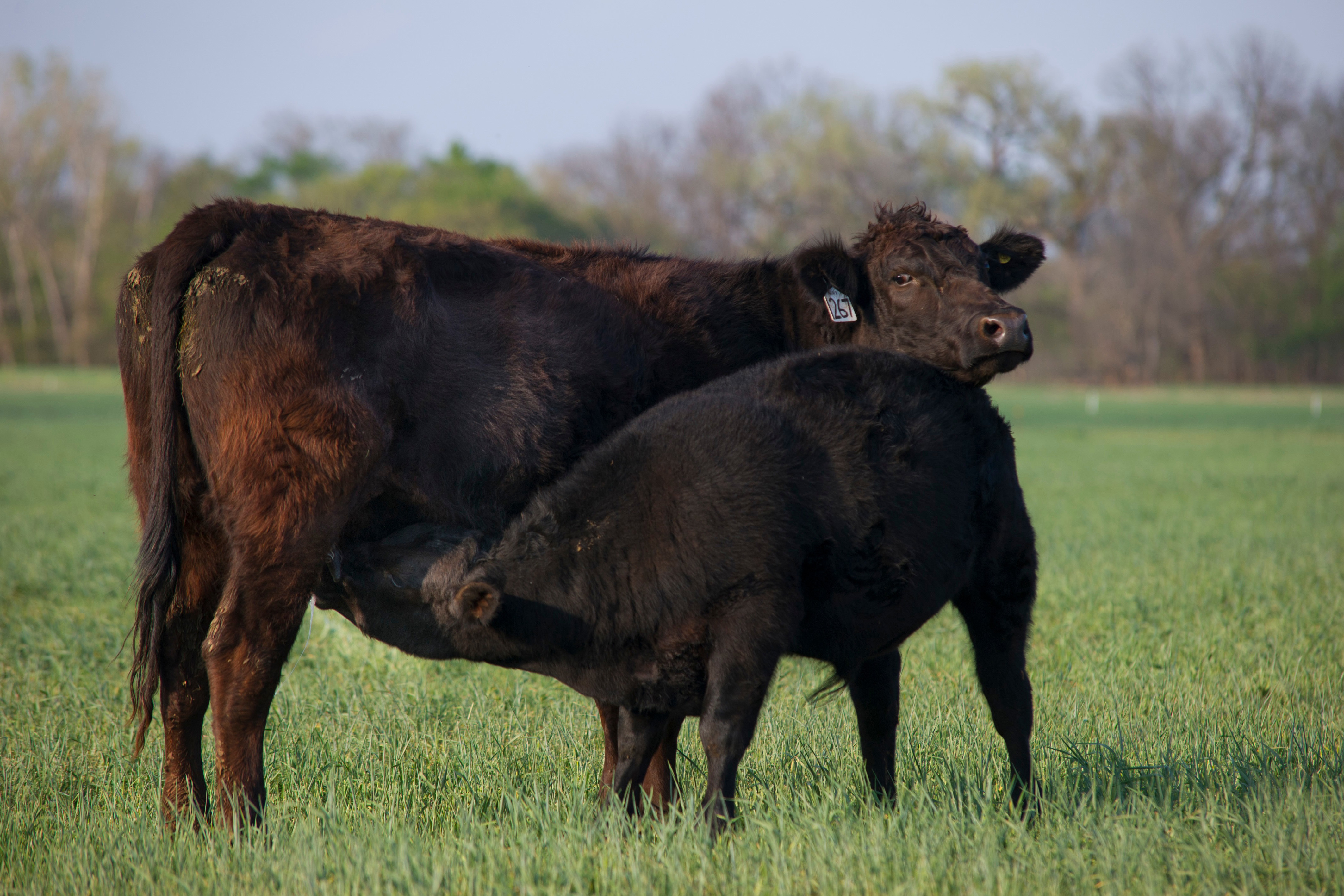
Agricultural News
Cow-calf Producers May Find two-stage Weaning Process Useful
Fri, 27 Mar 2020 07:59:46 CDT
 Cattle producers with fall-calving herds who are contemplating upcoming weaning choices have several options to reduce animal stress.
Cattle producers with fall-calving herds who are contemplating upcoming weaning choices have several options to reduce animal stress.
"Many people eat a lot when they are stressed, but calves tend to do the opposite," said Earl H. Ward, Oklahoma State University Extension area livestock specialist for northeastern Oklahoma. "This can lead to health concerns such as depressed immune systems and an increase in the number of diseased animals post-weaning."
There are a variety of ways to reduce stress during weaning. Popular options include but are not limited to working calves a few weeks prior to weaning and fence-line weaning. Both give calves time to recover with the dam.
Ward reminded producers not to overlook two-stage weaning. In a two-stage weaning process, the calf is weaned from milk before it is weaned from the cow. A nose flap is used to prevent the calf from nursing.
"This is not a new concept, but it has been improved upon over the years," Ward said. "Replacing the milk with a nutrient-dense diet prior to placement of a nose flap will help manage weight loss and allow the animal to transition faster. Producers should monitor their calf nutrition programs once the nose flaps are in place."
Typically, it is recommended a nose flap be installed five to seven days prior to weaning.
"Be sure to inspect the flap to eliminate any sharp edges before installation so as to lessen the likelihood of nose sores in a calf," said Dana Zook, OSU Extension area livestock specialist for northwestern Oklahoma.
Zook added it is important to remember that while two-stage weaning will reduce a calf's stress level, the producer needs to keep a close eye on the animal's nutrition to ensure animal performance is maintained.
"Producers should evaluate post-weaning nutrition options prior to weaning," she said. "Producers need to protect their operation's financial return and take care not to feed away all their profits. Do the math ahead of time and determine the best available option."
Post-weaning performance is greatly dependent on the quality and quantity of the feed or forage supplied to the animal. If forage is low in either quality or quantity, the addition of supplemental protein or energy may be necessary.
"If hay will be the primary forage option, a producer's first step would be to evaluate forage quality using a forage test," Zook said. "A forage test will remove the guesswork and help a producer determine what additional feed options are needed. OSU Extension county offices can help a producer through the process."
Zook and Ward stressed forage options should be relatively high in nutritional quality and palatable. Calves should have access to this forage prior to weaning.
"If a producer has access to some high-quality pastures such as wheat or rye in vicinity of the cow-calf herd, he or she might consider using a creep gate to allow calves access to some of this growing forage while they are still nursing," Ward said. "This can help with the transition if a producer is planning to turn weaned calves out onto small-grain pastures during the preconditioning period."
Fall-calving herds have an opportunity to utilize high-quality cool season grasses present in native range or small-grain pastures in graze-out situations. Regardless of forage type, producers need to make sure they provide a high-quality mineral that will offset any gaps that may exist in the mineral profile of their animals' diet.
"Weaning is often the most stressful time in a calf's life while also being among the riskiest for a cow-calf producer," Zook said. "This is not a time for short cuts. Practice due diligence, do all the necessary work ahead of time and make the best possible decision based on specific operational needs."
OSU Extension is one of two state agencies administered by the university's Division of Agricultural Sciences and Natural Resources and is a key part of OSU's state and federally mandated teaching, research and Extension land-grant mission.
WebReadyTM Powered by WireReady® NSI
Top Agricultural News
More Headlines...




